Supermicro SYS-5019C-MR Performance
At STH, we have an extensive set of performance data from every major server CPU release. Running through our standard test suite generated over 1000 data points for each set of CPUs. We are cherry picking a few to give some sense of CPU scaling. We also had a fairly limited selection of Intel Xeon E-2100 series CPUs at launch to test in the server.
Python Linux 4.4.2 Kernel Compile Benchmark
This is one of the most requested benchmarks for STH over the past few years. The task was simple, we have a standard configuration file, the Linux 4.4.2 kernel from kernel.org, and make the standard auto-generated configuration utilizing every thread in the system. We are expressing results in terms of compiles per hour to make the results easier to read.
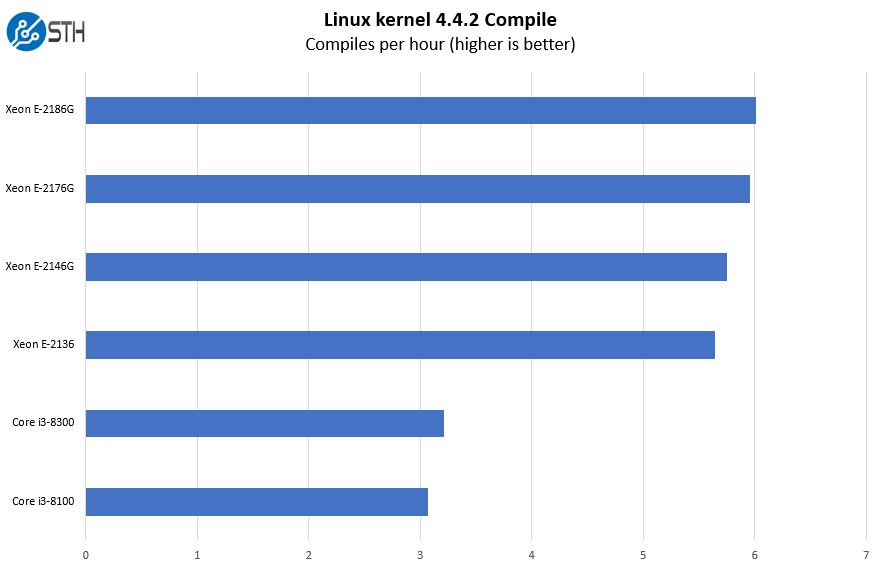
Here, the Intel Xeon E-2186G that we initially configured is a top performer. We are using these charts to provide some idea of the range of performance in the Supermicro SYS-5019C-MR.
c-ray 1.1 Performance
We have been using c-ray for our performance testing for years now. It is a ray tracing benchmark that is extremely popular to show differences in processors under multi-threaded workloads. We are going to use our new Linux-Bench2 8K render to show differences.
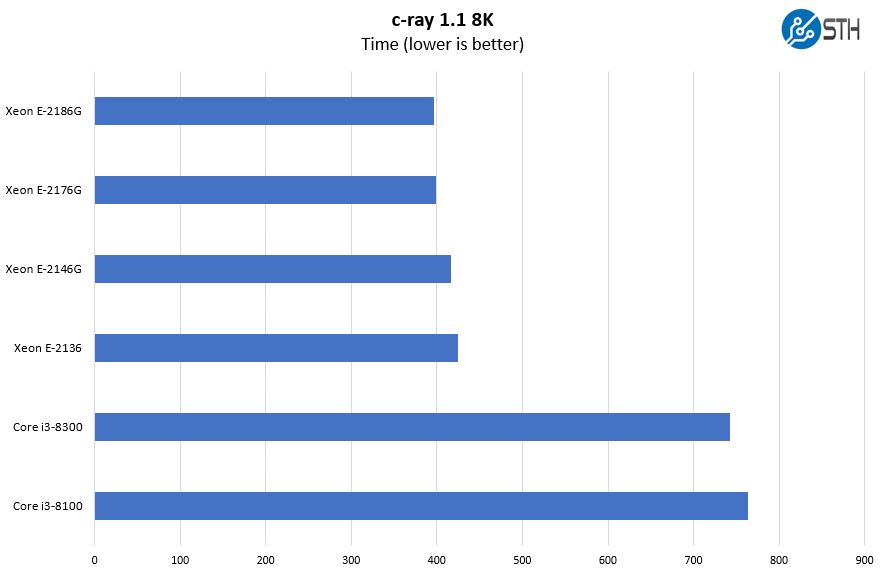
You will likely notice a large step function between the new Intel Xeon E-2100 series CPUs and the Intel Core i3-8000 series parts. If you want to see comparisons to other server CPUs, check out our Intel Xeon E-2176G Benchmarks and Review Major Performance Upgrade. We show why this generation has the largest performance improvement in the segment for almost a decade.
7-zip Compression Performance
7-zip is a widely used compression/ decompression program that works cross-platform. We started using the program during our early days with Windows testing. It is now part of Linux-Bench.
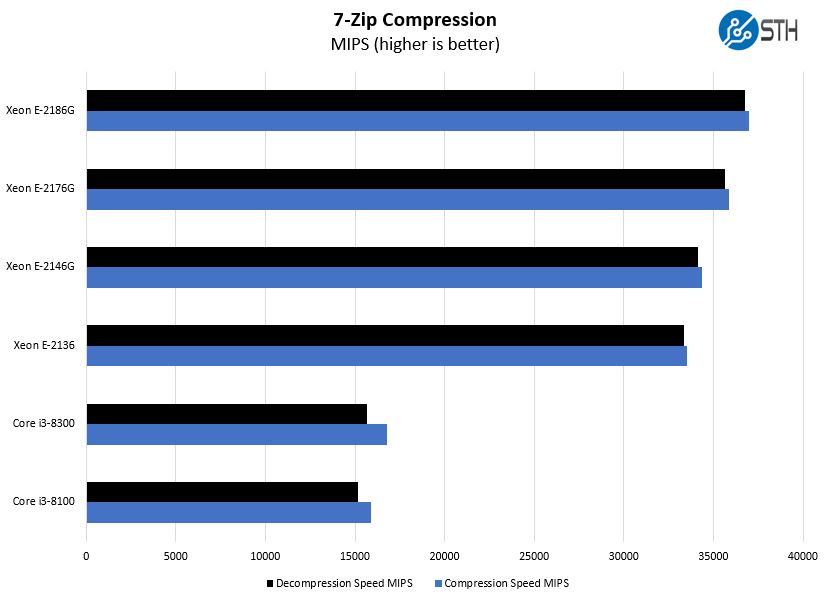
Here again, we see a pattern on our compression results. Since this is a storage server, compression performance is important. We strongly recommend the Intel Xeon E-2136 or higher in the SKU stack.
OpenSSL Performance
OpenSSL is widely used to secure communications between servers. This is an important protocol in many server stacks. We first look at our sign tests:
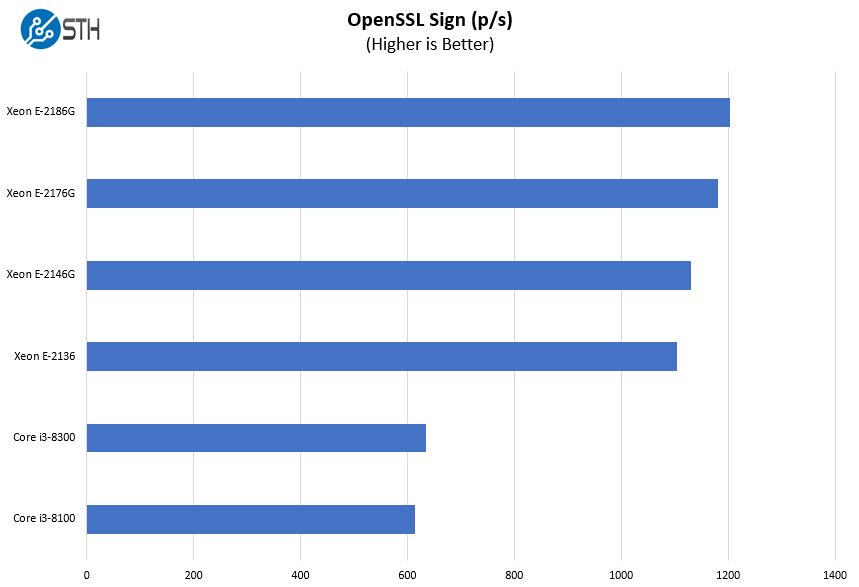
And here are the verify results:
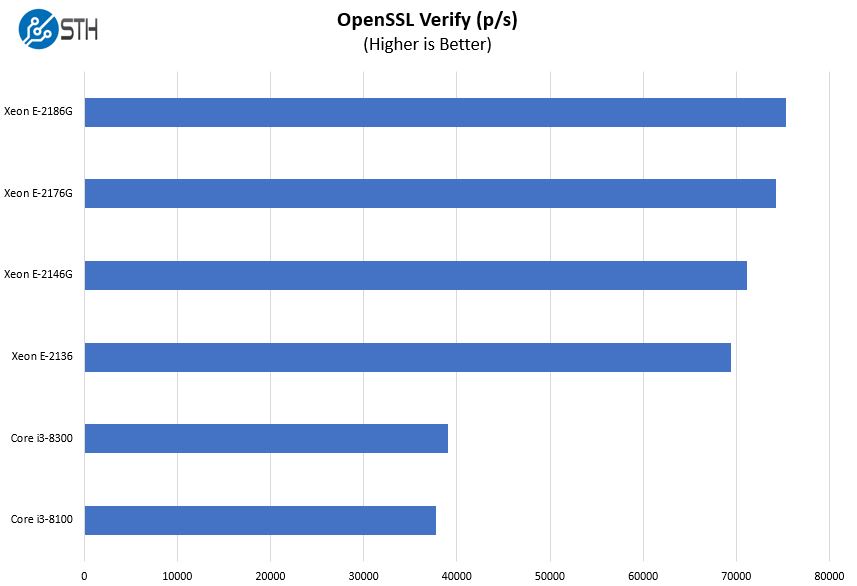
These types of servers are often used as web front-ends so OpenSSL performance is important. Again, we recommend the 6-core parts.
Chess Benchmarking
Chess is an interesting use case since it has almost unlimited complexity. Over the years, we have received a number of requests to bring back chess benchmarking. We have been profiling systems and are ready to start sharing results:
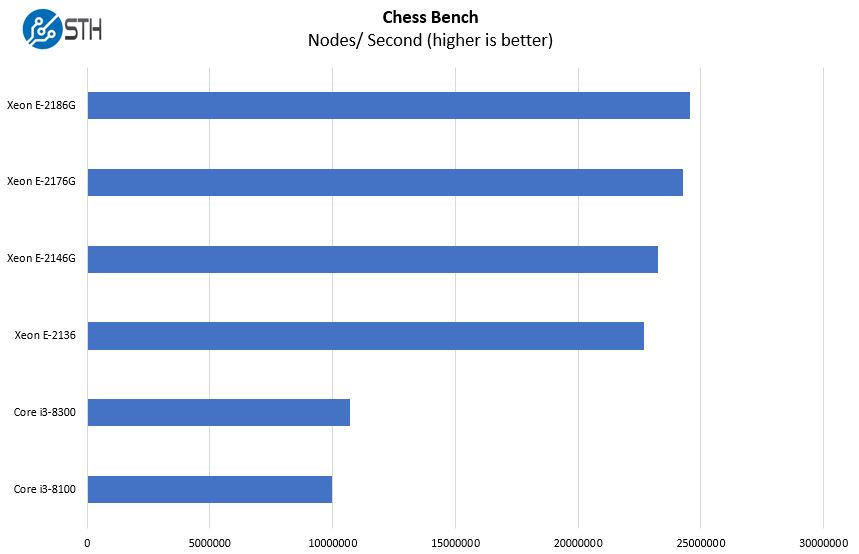
At this point, one may be wondering what about the 4 core/ 8 thread parts. We did not have any of those parts available to test. Based on specs, and what we have seen on the consumer variants, we again suggest that if you are optimizing on performance the 6 core/ 12 thread models are the way to go.
GROMACS STH Small AVX2 Enabled
We have a small GROMACS molecule simulation we previewed in the first AMD EPYC 7601 Linux benchmarks piece. In Linux-Bench2 we are using a “small” test for single and dual socket capable machines. Our medium test is more appropriate for higher-end dual and quad socket machines. Our GROMACS test will use the AVX-512 and AVX2 extensions if available. On the Intel Xeon E-2100 series system, this is only AVX2 since the platform does not support AVX-512 like Intel’s higher-end Xeon Scalable parts.
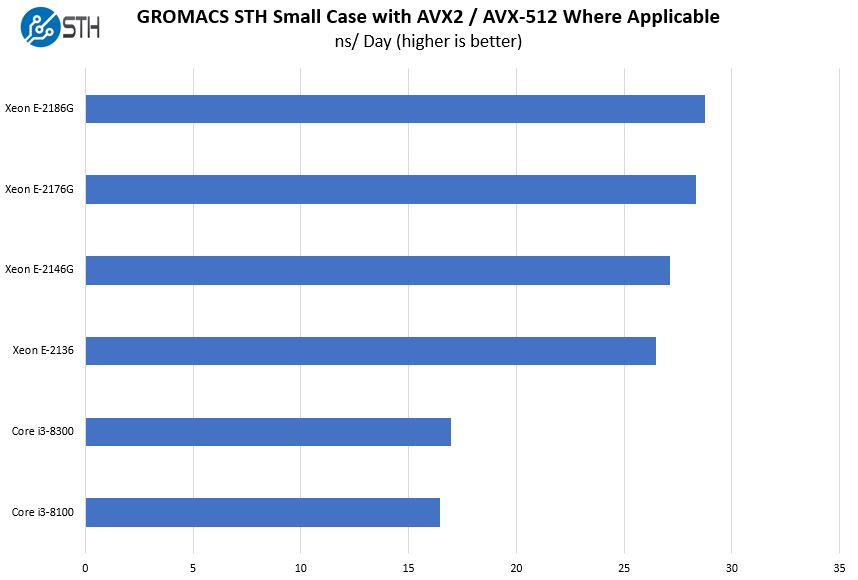
For AVX2 workloads, the Intel Xeon E-2100 series in the Supermicro SYS-5019C-MR perform surprisingly well. This is due to the excellent cooling along with the fact that these parts sustain higher clock speeds instead of dropping clocks significantly as is the case in the Intel Xeon Silver line.
In the last part of our review, we are going to focus on power consumption and give our final thoughts. on the platform.

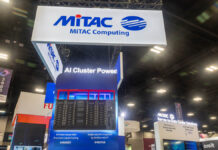
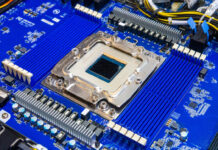

Patrick, How important it is for a SOHO server to use the larger 22110 drives like P4511 instead or e.g standard Samsung’s EVO 870. The price difference per drive is about 300€ in EU e.g P4511 is about 800€ and EVO 520€. The machine does have an UPS
wow a 9.6! must be really exceptional! was expecting a 9.4 or 9.5!
Can you publish the price of the server as configured?
And is it possible to add the noise levels to your reviews?
Hi Stijn, we will do that for some of the pedestal/ tower servers. For rackmount units meant for a data center we do not do this.
OK, this is a long shot, and it’s actually what I thought this review was originally going to be about… I’ve been out of the loop for the last several months due to a career change. I was expecting this machine to be a powerful, rack-mounted _workstation_, if such a concept even makes sense or there is a market for it.
As a fan of Supermicro, this is something I would love to see one day in the future. Do you know if anything like this is on the cards? There are exciting workstations appearing in Supermicro’s catalogs recently, and I thought this might be one of those. What do you think about this, in general?
Hi Patrick, thanks for the in-depth review! Just have a question on the storage: it says in your article “The two drives can be used for a mirrored storage or …” Do you have any hint how to configure it? Thanks!